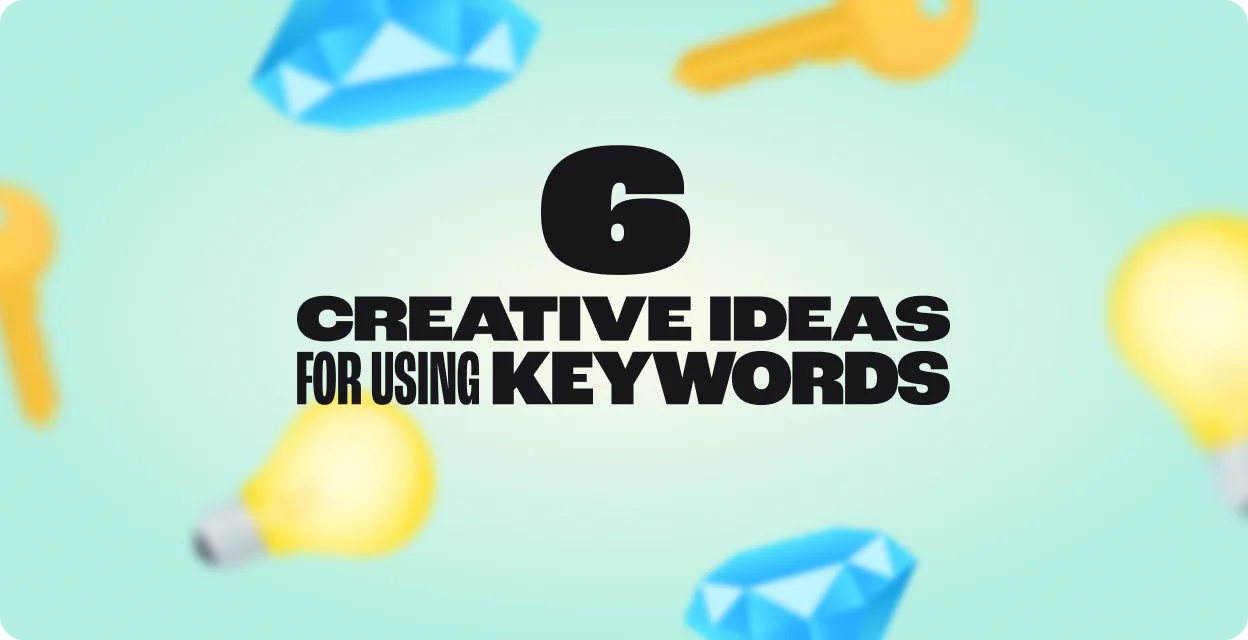
6 Creative Ideas for Using Keywords to Drive Conversational SMS
At the most basic level, conversational SMS is engaging in two-way text messaging with your subscribers. You send out a text, and they respond.
While many ecommerce brands achieve conversational SMS by monitoring and manually replying to subscriber responses, that sort of labor-intensive approach isn’t feasible for every business. Smaller brands may not have the staffing necessary to commit to this sort of effort—and larger brands with huge SMS marketing lists may not always be able to manage the volume of incoming messages they receive (especially after sending a conversational SMS marketing campaign to their full list).
Here’s where keywords swoop in for the win. Many brands are familiar with keywords as a way to drive opt-ins (e.g., “Text JOIN to 12345 to sign up for our VIP club”)—but keyword responses are so much more than that. This SMS-specific tool empowers brands to engage subscribers throughout the customer lifecycle, harnessing the power of automation to drive 1:1 conversations at scale.
How? Brands can set up keyword-triggered flows ahead of time—and create two-way conversations that feel personalized and human without the manual effort that goes into typing out individual replies to incoming subscriber messages.
Here’s why using keywords to drive conversational SMS is so crucial. Not only does this allow you to segment and better target subscribers for upcoming messages, but you’re also engaging your audience. When someone opts into your SMS list, they’re expecting to engage with a brand the same way they text with friends, so don’t just use SMS as a promotional tool. Texting your customers allows you to get to know them better and give them access to your brand at a deeper level.
There are endless applications for this SMS marketing strategy, but here are some of the best examples we’ve seen from brands on Postscript. (To learn more about creating conversational flows using event branching in the Postscript Flow Builder, check out this help center article.)
In this article (click to jump to a particular section):
1. Quiz subscribers about their needs or interests.
If you offer multiple products or product types, then you can use keywords to help better serve subscribers with the items they should be shopping for. Individual subscribers will be much more likely to engage with content or offers specific to the product(s) they’re interested in—and keyword quizzes can help you suss out what those interests are. (Bonus: You can place subscribers who respond into response-based segments—and then use them to create targeted campaigns in the future.)
Here’s an example that beauty brand Glow Recipe includes as part of their welcome series.
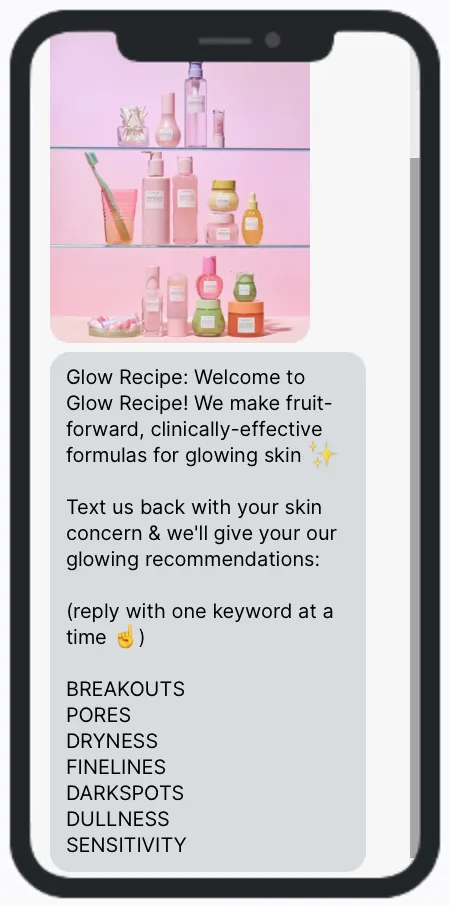
Glow Recipe has a different response for each keyword, which fires off immediately after the subscriber texts back the keyword. The great thing about these responses is that they aren’t pure product promos; the brand also offers a link to a relevant educational resource, which helps get folks on the website even if they aren’t quite ready to buy. Here are a couple of examples.
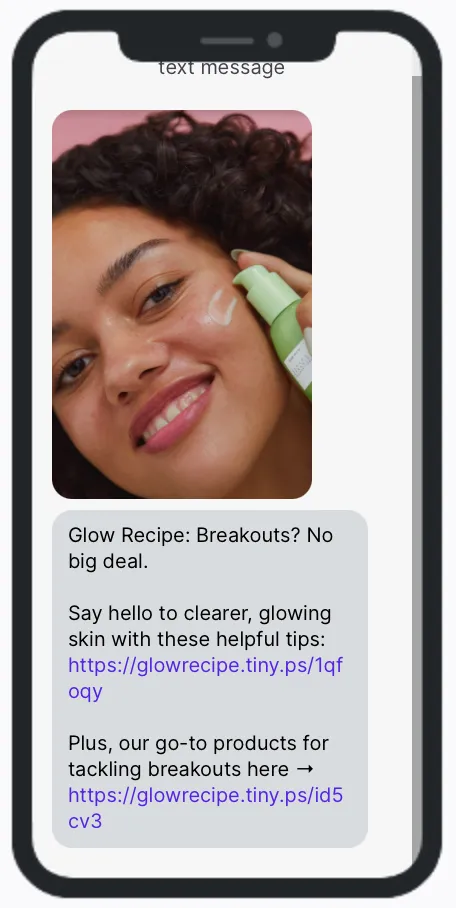
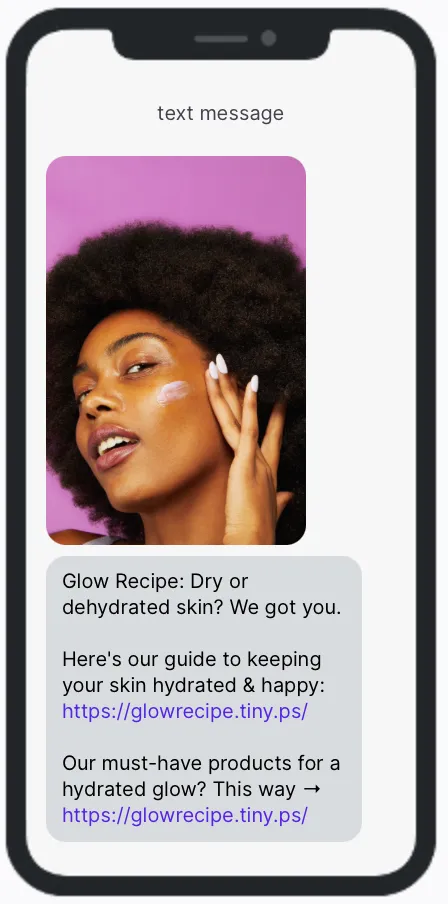
Here’s a similar example from herbal remedy brand Organic Olivia.
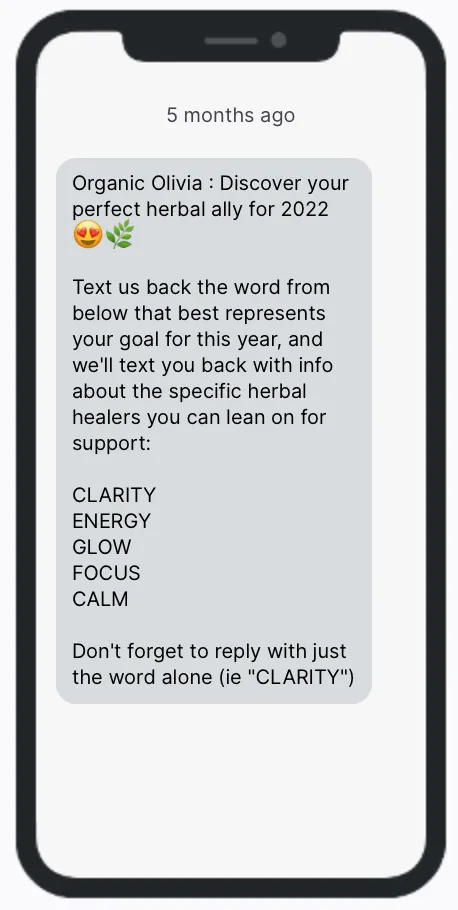
Those who reply “ENERGY” receive this message.

And those who reply “CALM” get this message.
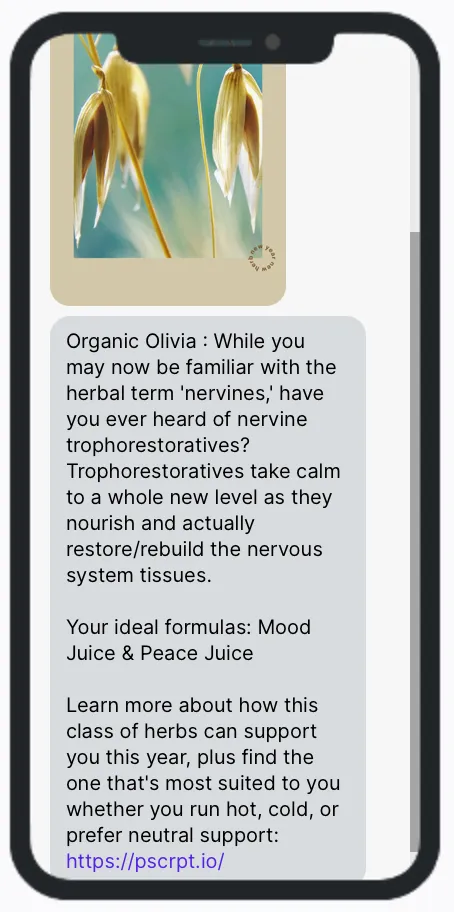
2. Gamify it.
Tap into your subscribers’ competitive nature with a trivia or quiz campaign that allows them to text in their answer using keywords for multiple choice responses. Here’s a fun example that pizza oven brand Gozney sent to their foodie fanbase.

Build keyword responses for each answer. You could include a discount code for those who get it right (or, if you’re feeling generous, for anyone who participates). Or, simply direct those who engage to a relevant piece of content, as Gozney did with their replies for this campaign.
Here’s the message that went to those who texted in the correct answer.
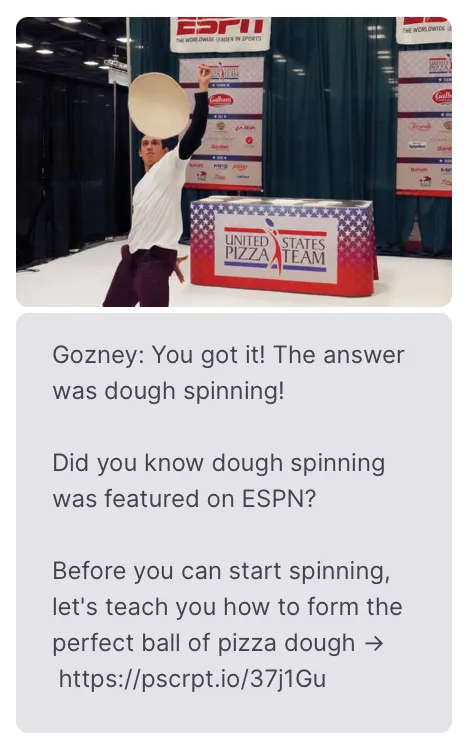
And here’s the version that went to those who responded incorrectly.
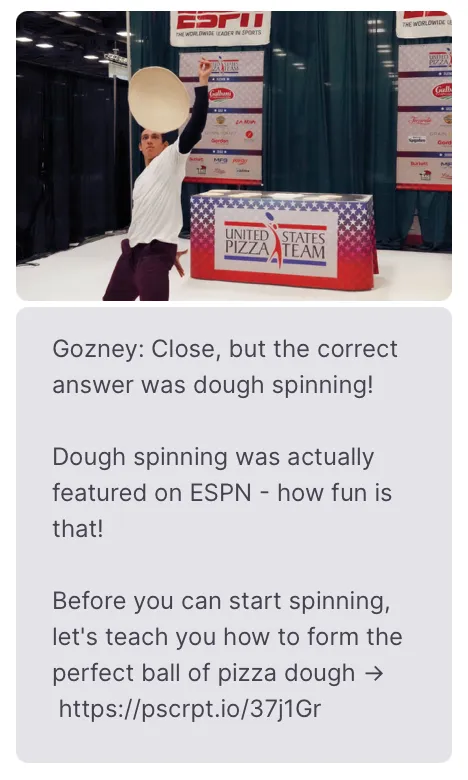
Wandering Bear Coffee offers a slightly different take on the trivia angle, inviting subscribers to play a round of “two truths and a lie.” The first message asks recipients to reply with the number associated with the lie.

Spoiler alert: Option 2 is the lie. Here’s the response for those who answered correctly—complete with a free shipping offer for cold brew.

And here’s one of the responses for the incorrect answers. (It still includes the free shipping offer as a consolation prize.)

3. Poll your audience.
People love sharing their opinions or showing their support for something they like. More than that, they love seeing how their preferences stack up to their peers.
So, ask your subscribers to weigh in on a topic relevant to your brand—whether it’s asking them which flavor you should make next or getting their predictions on an upcoming sporting event. Reply with a friendly response—and maybe a little reward for participating. After you’ve collected replies, follow up with a breakdown of the results.
Here’s another example from Gozney. This time, they ask subscribers about their favorite style of pizza.

Depending on the subscriber’s response, they receive a short reply tailored to their selection—and a link to a page containing pizza recipes.
For example, here’s the response for New Jersey.

And here’s the one for Chicago.

Clothing brand Route One Apparel sent out this campaign on the biggest Sunday in pro football. While you could simply ask subscribers to respond with their team pick, Route One got a little more creative—asking their subs to predict the outcome of the coin toss.
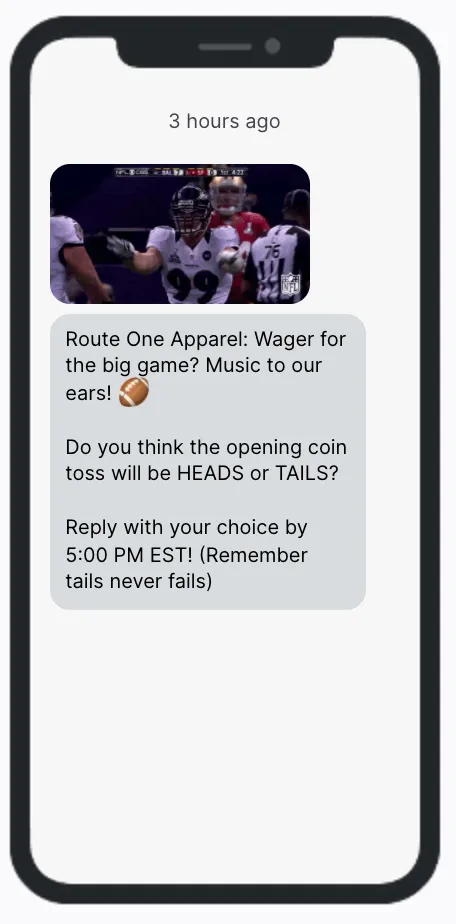
Here were the responses for the winners and losers, respectively. (Note that both groups received the same discount code.)


Hummingbird Candle Co. ran an entire series of “votable” messages for their Survivor promotion. Each message pitted several scents against one another, inviting subscribers to reply with the keyword representing the scent they wanted to “save” from the chopping block. It was a smart and creative way to gamify subscribers’ SMS experience—not to mention collect data on each subscriber’s favorite products.
Here’s the first message in the series, where Hummingbird asks subscribers if they’d like to opt into the game.
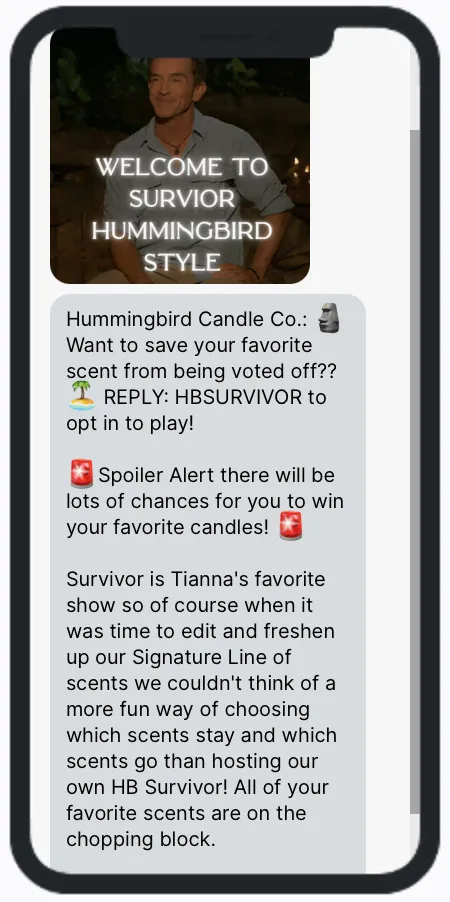
And here’s an example from one of the voting rounds. This one focused on food-related candle scents.

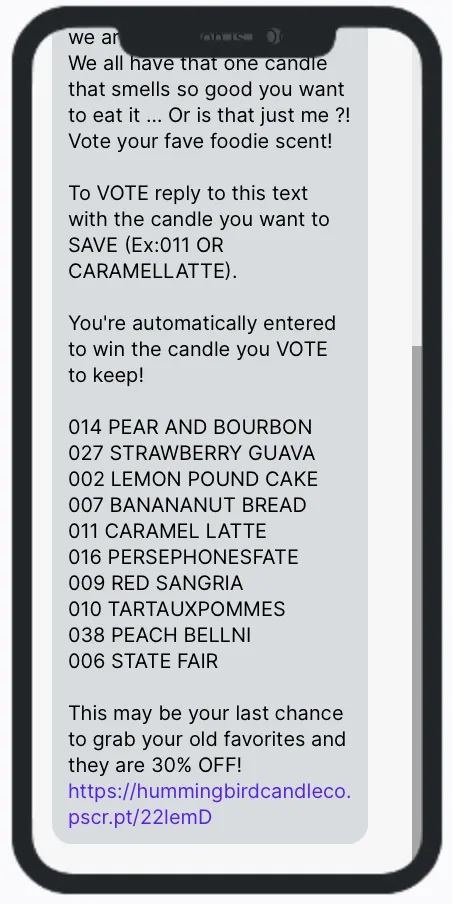
The brand further incentivizes participation by entering each voter into a drawing to win the candle they selected. Then, they end the message with an urgent CTA to purchase the potentially discontinued candles before they’re gone—and offer a 30% discount for good measure.
4. Serve up personalized messages or content.
Provide a list of keywords representing different interests, tastes, or personality traits—and invite subscribers to respond with the one that resonates with them most. Then, reply with a message tailored to their chosen keyword.
This is a great way to brighten subscribers’ day and give them an experience that feels truly conversational. They’ll really feel like they’re texting with a friend—even though the whole sequence is entirely automated, making it super easy to implement whether you have a subscriber list of 100 or 100,000.
Here’s a great example from kombucha brand Health-Ade. In celebration of World Compliment Day, they asked subscribers what kind of boost would brighten their day the most.

And here are the responses for HYPE and HUG, respectively.


Both of these are super short and sweet—and only take a few minutes to set up in Postscript. But the dopamine jolt you give a subscriber will last the entire day—and reinforce their positive feelings toward your brand.
Healthy soda brand OLIPOP sent a fun, horoscope-inspired campaign where they ask subscribers to reply with their favorite flavor to see an analysis of their personality.
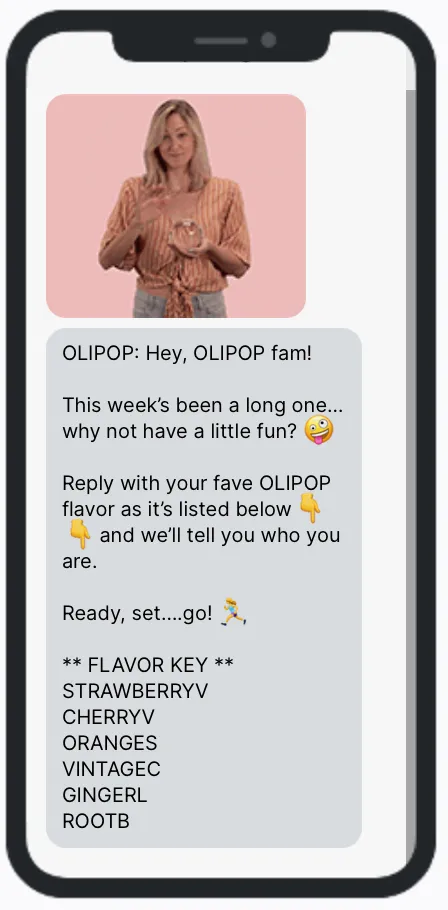
Here’s an example of a reply (this one’s for vintage cola).
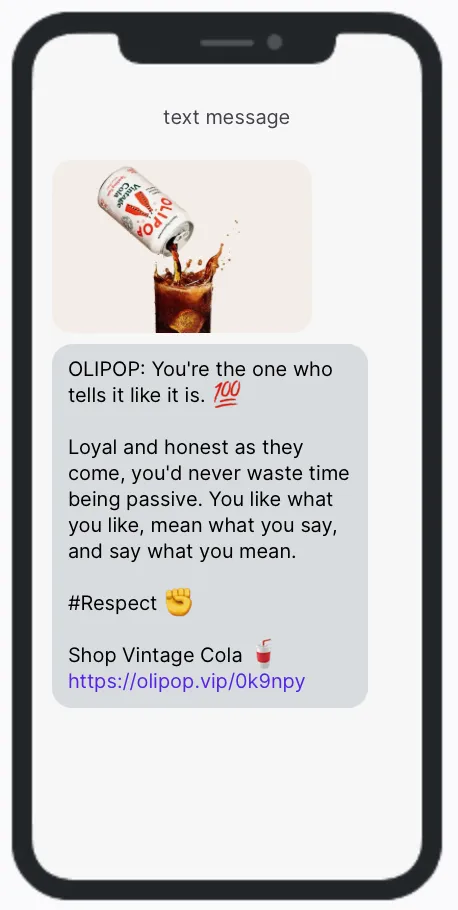
And here’s the reply for strawberry vanilla.
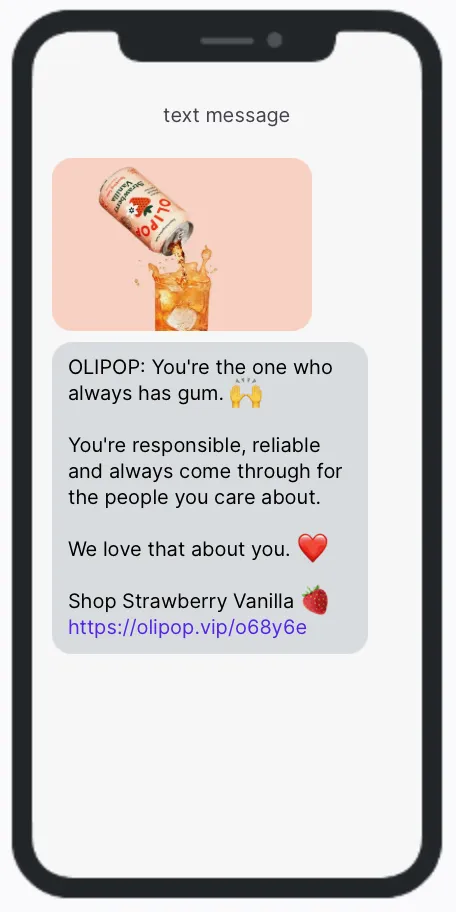
Finally, here’s a creative take on this strategy from Tower Records. They offer music recommendations tailored to a subscriber’s specific preferences. All they have to do is reply with the keyword that best represents their tastes.

Subscribers who select classic hip-hop receive this response.

Those who choose pop get this response.

It’s a great way to not only help folks discover new artists and tunes, but also get them onsite to browse a collection they’ll probably like—which makes them more likely to purchase. Remember, providing a great customer experience can help move shoppers through the customer journey—and conversational texting is a smart (and frankly, underused) way to turn potential buyers into actual ones.
5. Give subscribers the offer or discount they want.
As explained here, “research shows that people are more appreciative of gifts they ask for than ones they don’t.” Similarly, subscribers are more likely to use an offer that they request. So, give them the opportunity to choose the type of offer they receive—whether it’s a product-specific discount, a free shipping offer, a dollar amount, etc.
While you’ll end up sending more messages than you would with a standard SMS marketing campaign blast, you’ll likely see higher conversions and sales from those who receive the offer (again, because they’ll feel more compelled to use it after asking for it). Plus, it’s a great way to build stronger customer relationships by having more personalized SMS conversations.
Here’s a simple example from nutrition brand LAKA.
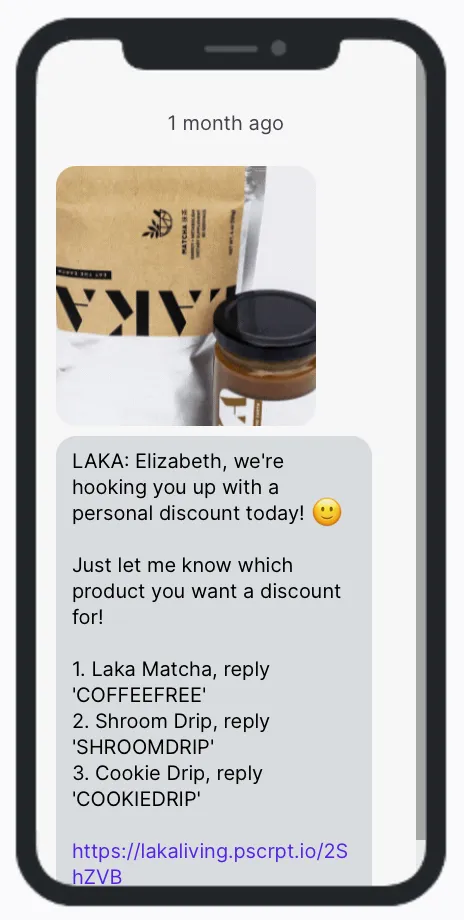
And here’s the response for SHROOMDIP. It really does feel like a friend is hooking you up with a discount.
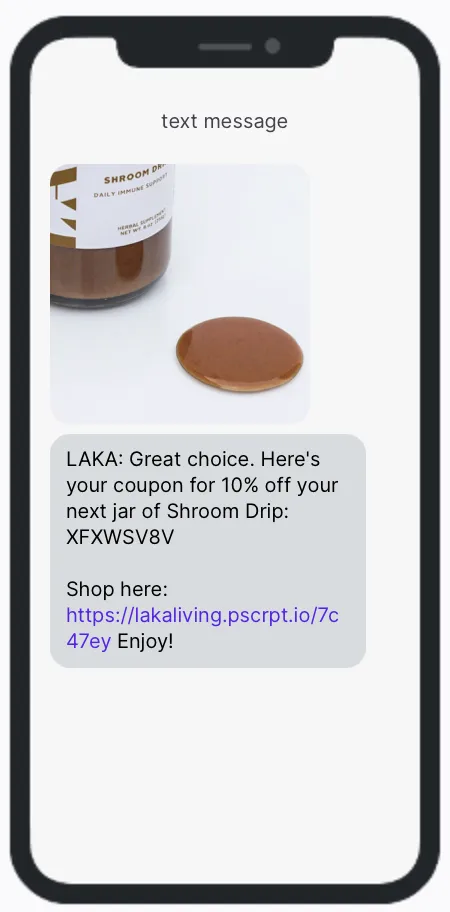
6. Let subscribers choose their own adventure.
It’s a timeless trend in youth fiction for a reason: “choose your own adventure” is just plain fun! It’s also a perfect play for your SMS marketing strategy, because subscribers can participate in real time at their own pace—and you can automate the whole thing using keywords.
Stoke up that nostalgia and delight your list with a throwback to their childhood days. It’s a positive experience they’re sure to remember—and associate with your brand—for months to come.
Let’s run through an example from ski brand J Skis. Here’s the first message in the series.

Obviously there are countless ways this story could unfold based on the responses subscribers choose. Here, we opted for SHRED, which triggered this message.

For this one, we picked RESORT, which led us to this message.

We chose to get in LINE, which took us to our final message.

And in case you’re curious, here’s the video link included above.
Pretty fun, right? And it really doesn’t take that long to set up—it’s simply a matter of creating a triggered response for each keyword in the series. This is a great example of how brands can leverage the immediacy of SMS to create an experience that just wouldn’t be possible with most other communication channels (social media or email marketing, for example).
It’s also worth noting that Postscript’s Flow Builder is constantly being enhanced to support conversational SMS. For example, our Response Branching recognizes variations of keywords—so a subscriber’s reply doesn’t have to be an exact match in order to trigger a conversational keyword response. It’s just one more way we’re humanizing brand-subscriber interactions to make them feel more like conversations with friends.
Of all your marketing channels, SMS is the best suited to having real conversations with real people. And two-way SMS is an incredible tool for increasing customer engagement and retention.
But that doesn’t mean you and your team have to dedicate tons of precious time to writing unique responses to every single incoming message. It also doesn’t mean settling for an automated experience that feels rigid and robotic. When you use a tool like Postscript to build response-driven automation flows, you can give subscribers an interactive experience that feels almost exactly like chatting with any other person in their phone contacts.
Ready to hop into Postscript and get started? Check out this step-by-step guide to using response branching in our Flow Builder. Or, simply jump into Flow Builder now and select a template.
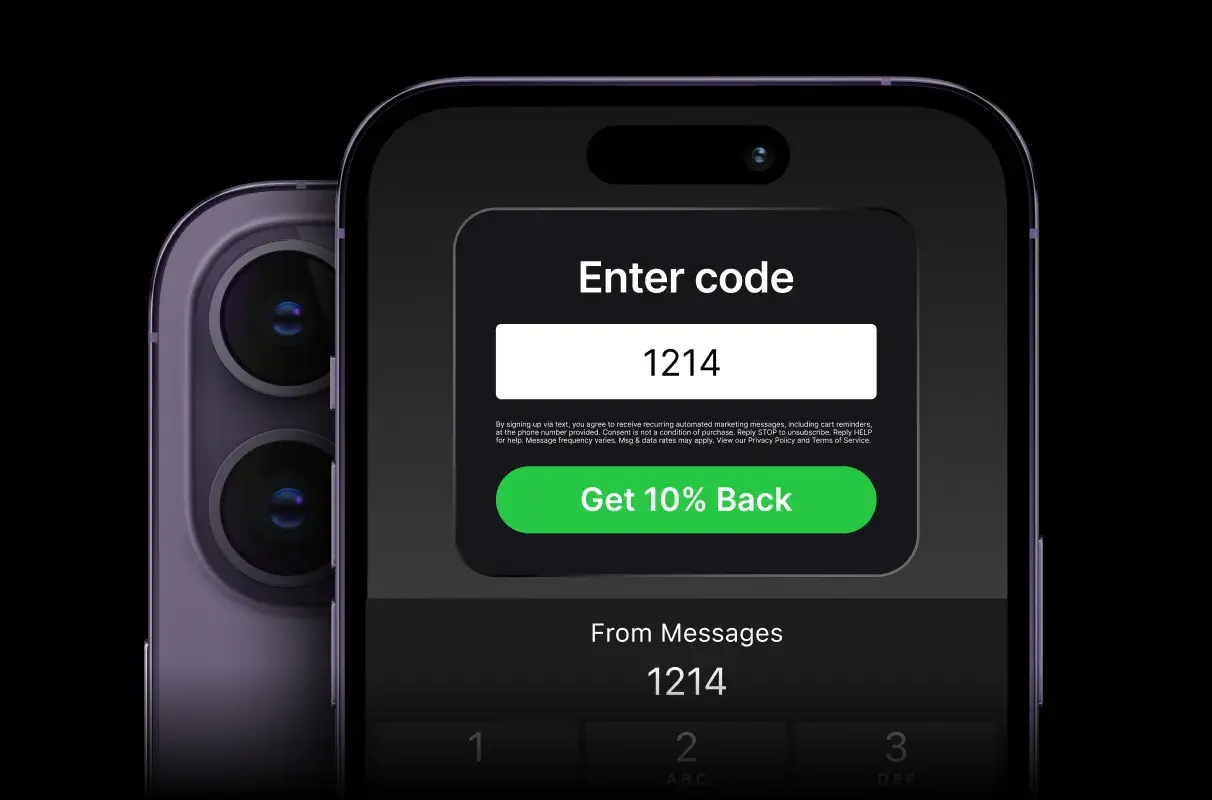
No one grows your list faster than Postscript
Brands that use Onsite Opt-in get 3x more subscribers. Keep visitors on site, maximize order conversion and maintain campaign attribution—all while tripling your list.
